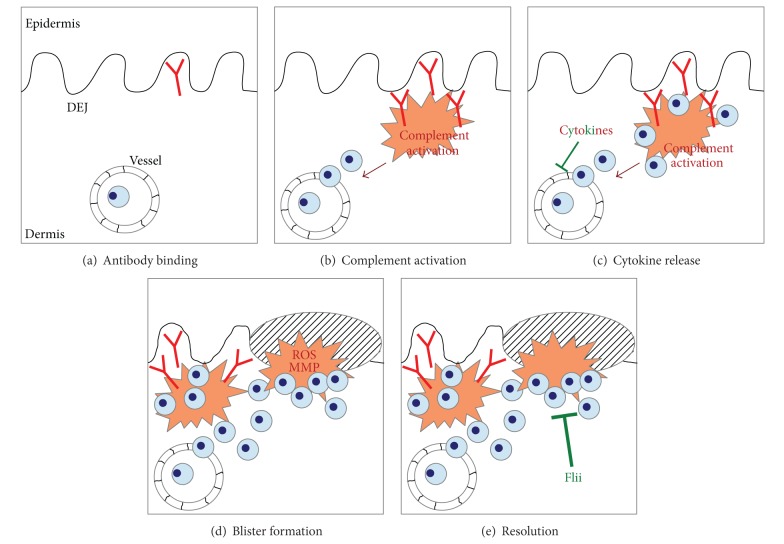Figure 4.
Pathogenesis of autoantibody-induced tissue injury in EBA. (a) In EBA, blister formation is induced by antibody binding to COL7 located at the dermal-epidermal separation. (b) This leads to the activation of the complement system. Cleavage products of complement activation, for example, C5a, mediate CD18-dependent neutrophil extravasation into the skin. (c) Subsequently, cytokines are released from yet to be defined cells. This can either contribute to tissue injury (GM-CSF, IL-1, CXCL1, and CXCL2) or have potent anti-inflammatory effects (IL-6, IL-1ra). (d) Blister formation is mediated by MMP such as elastase and reactive oxygen species (ROS) released from neutrophils after binding to the immune complexes. (e) Recent attention has focused on the resolution of inflammation in EBA. Flightless I (Flii) has potent anti-inflammatory and proresolving effects in experimental EBA.

